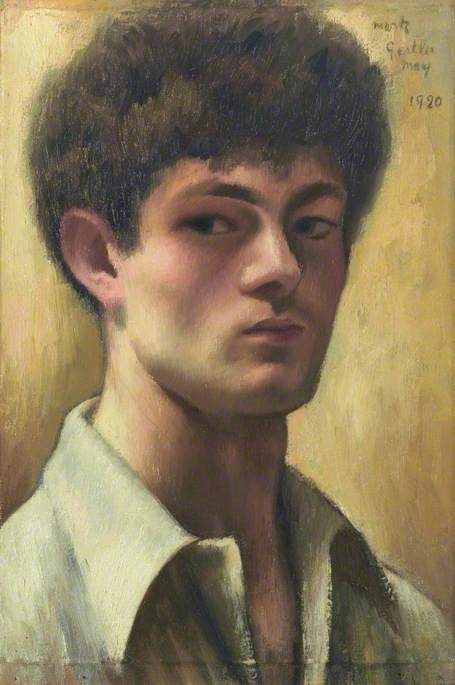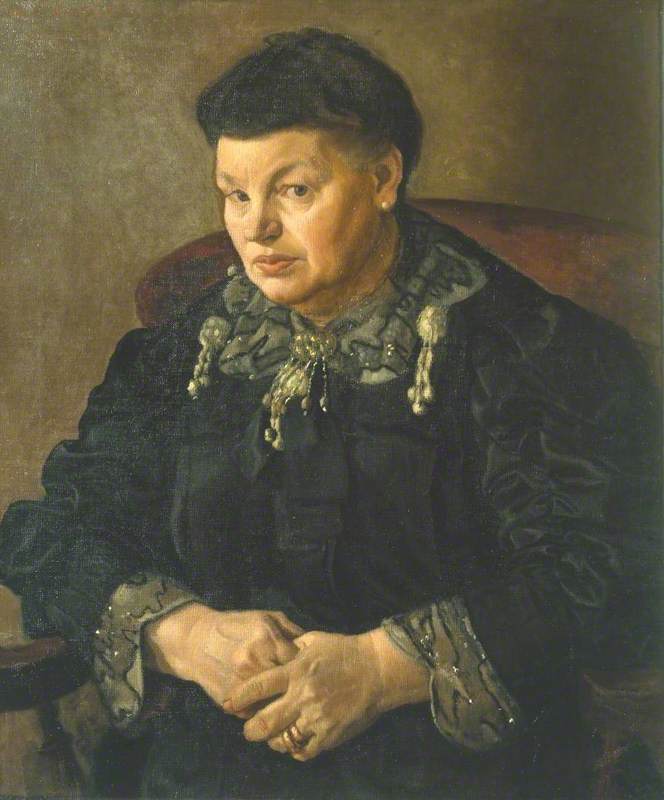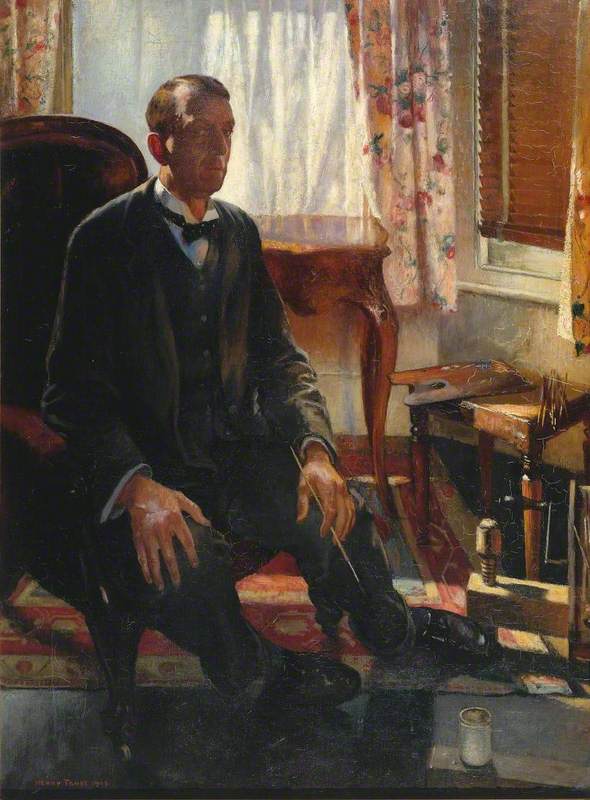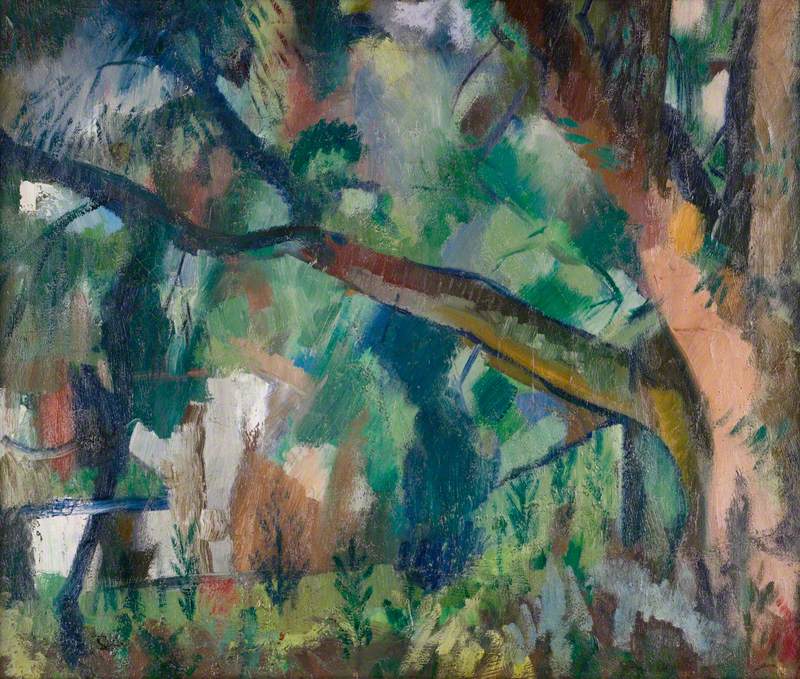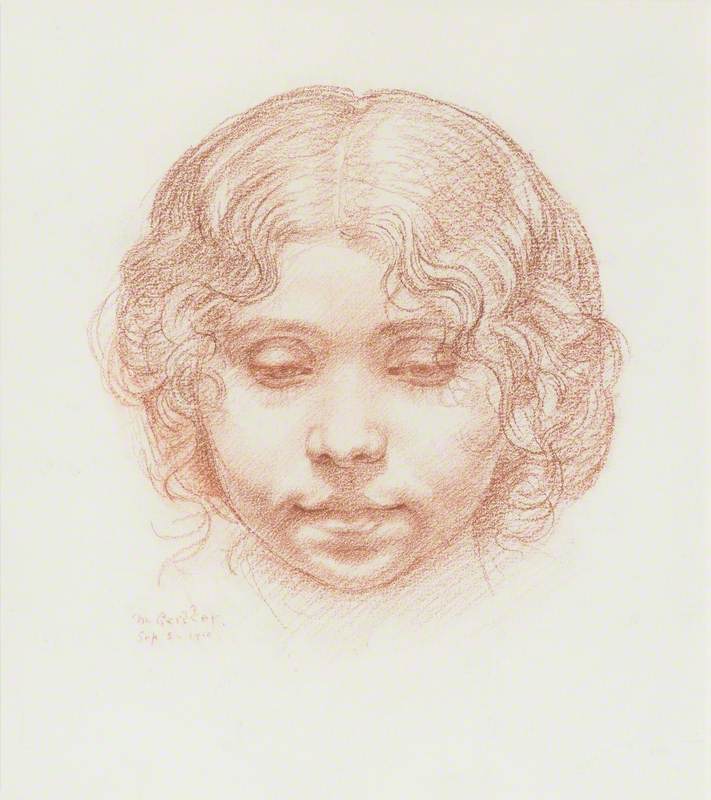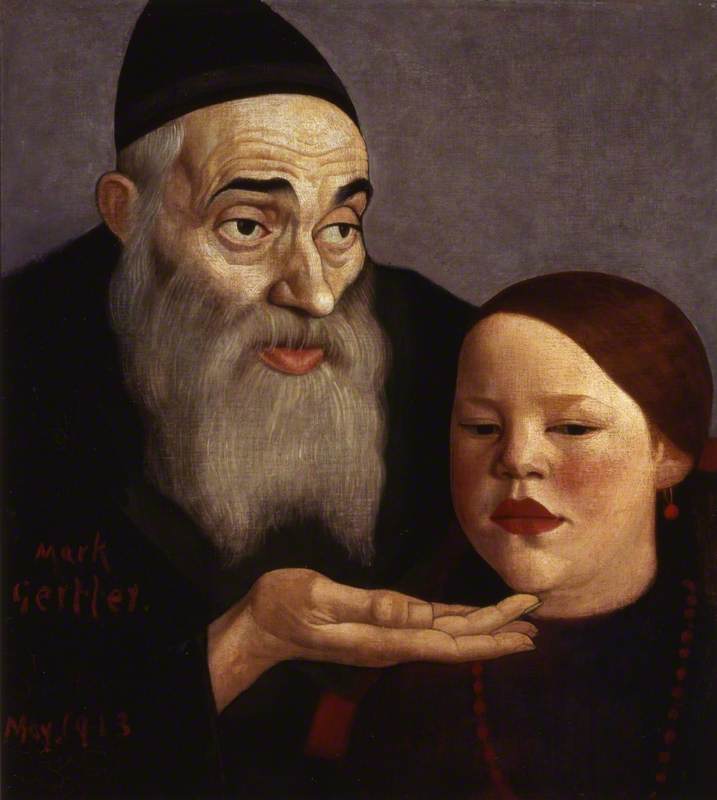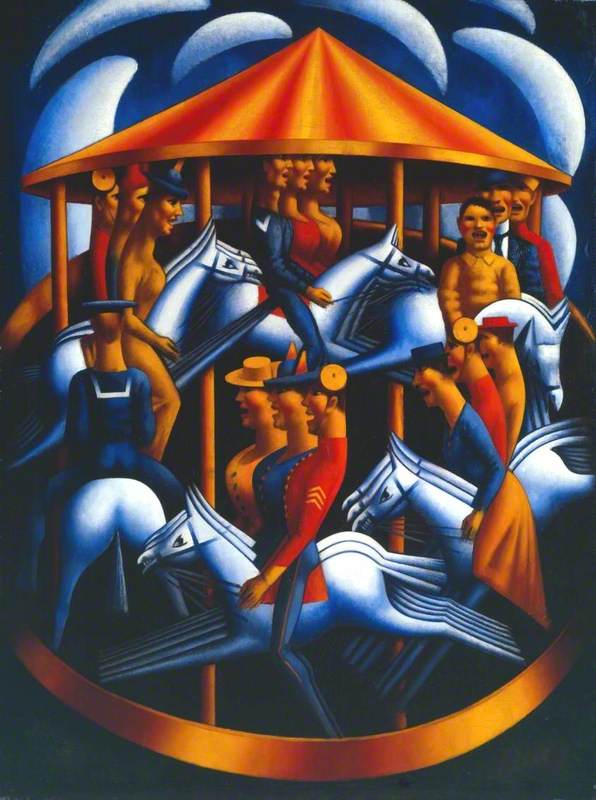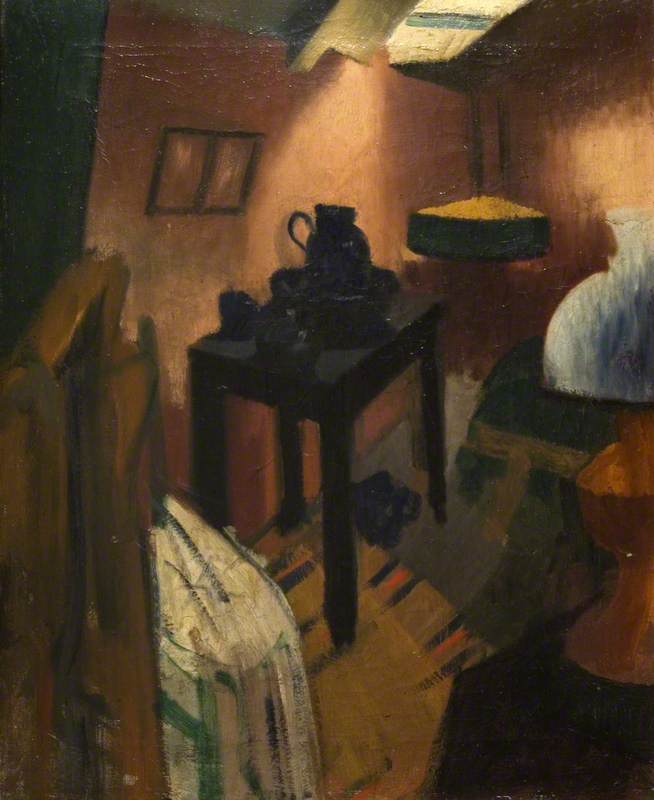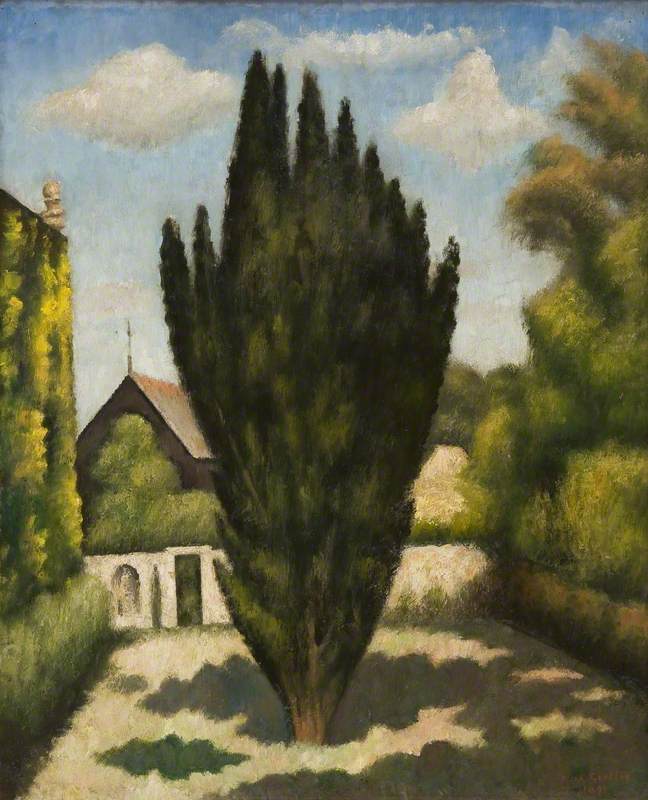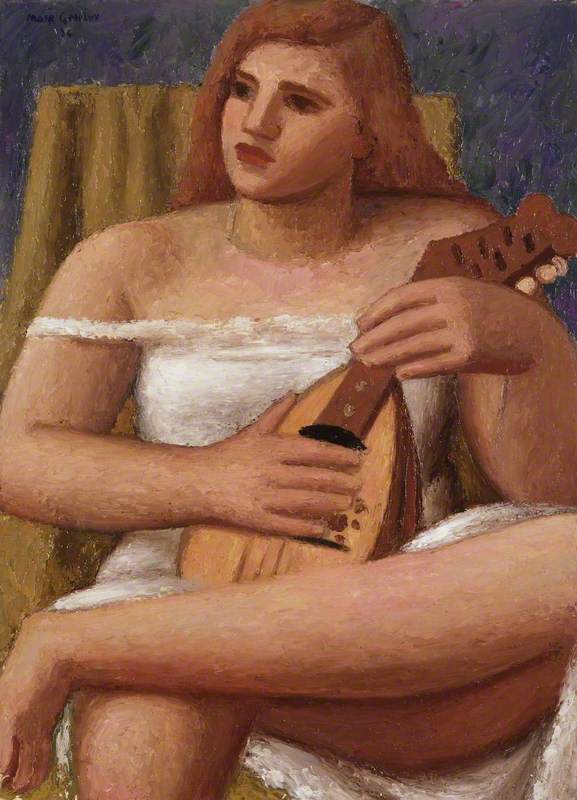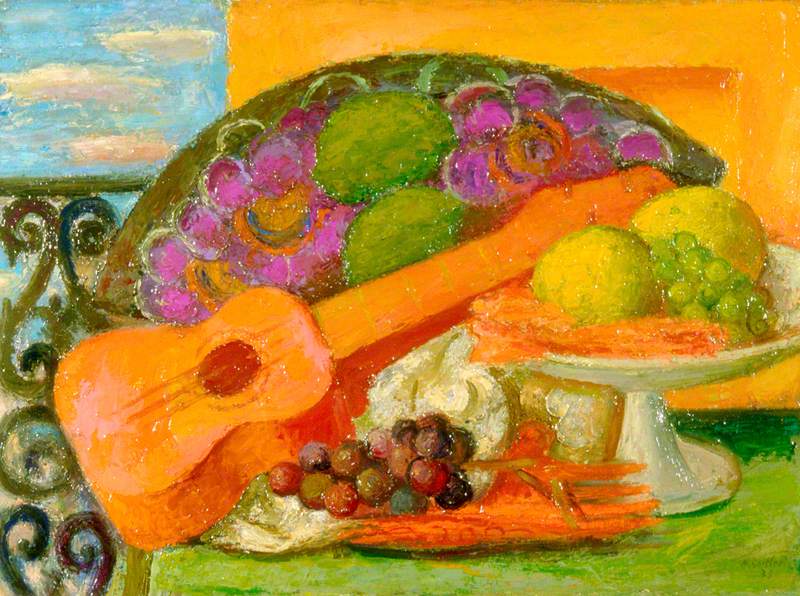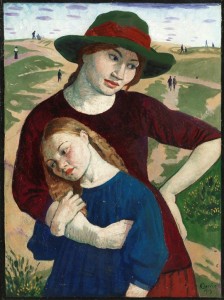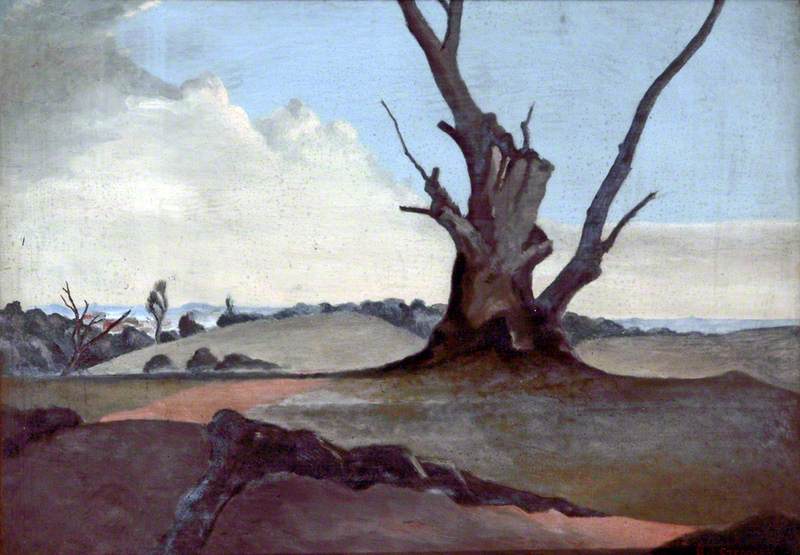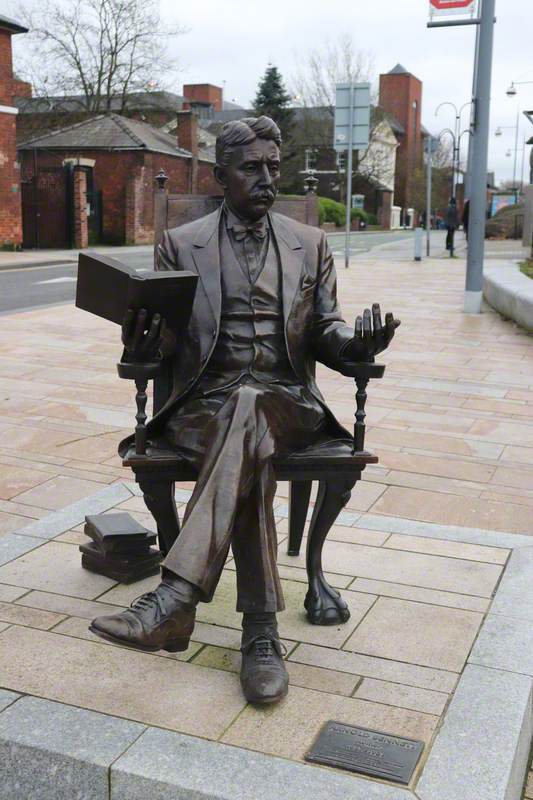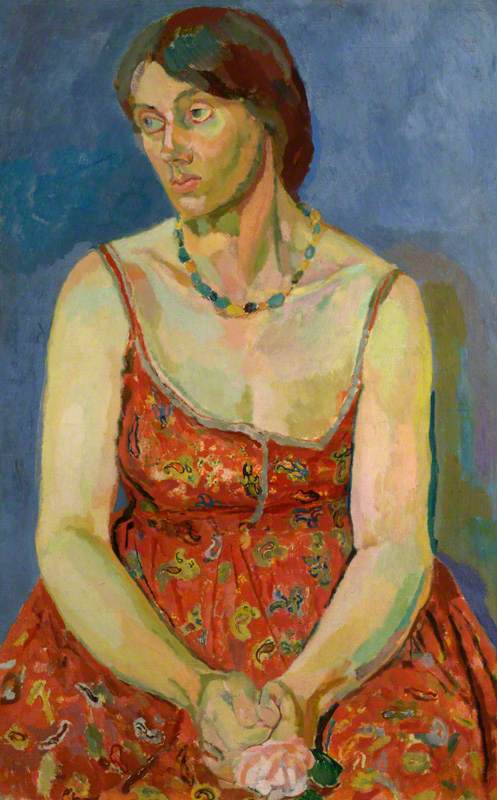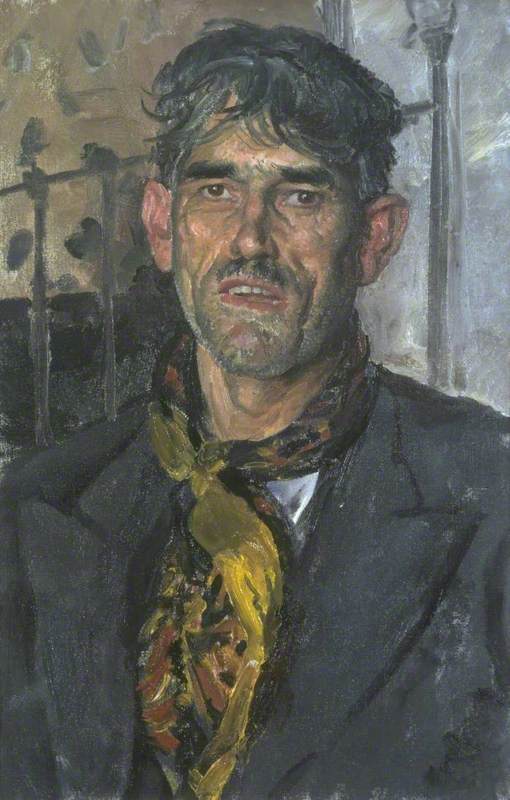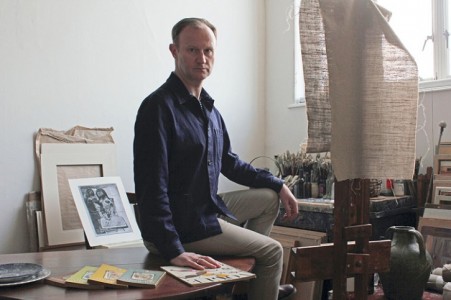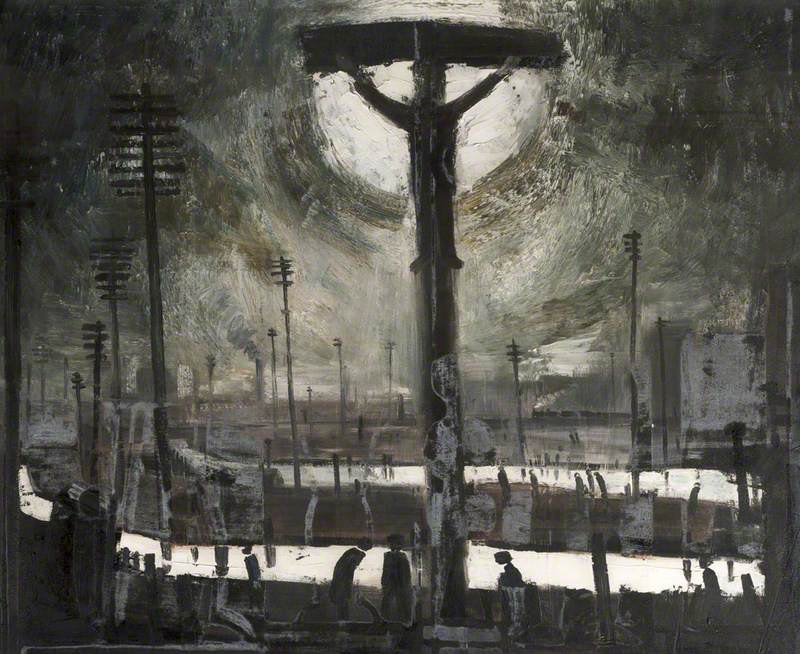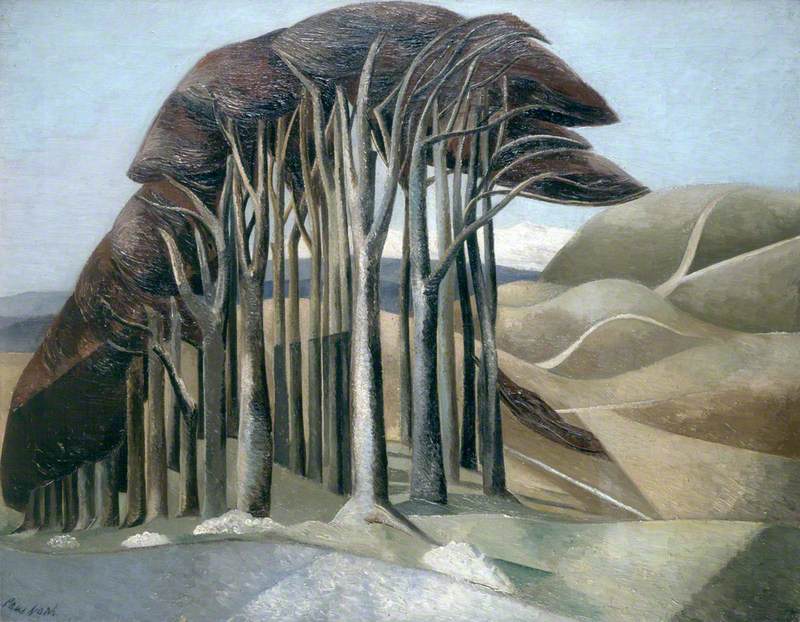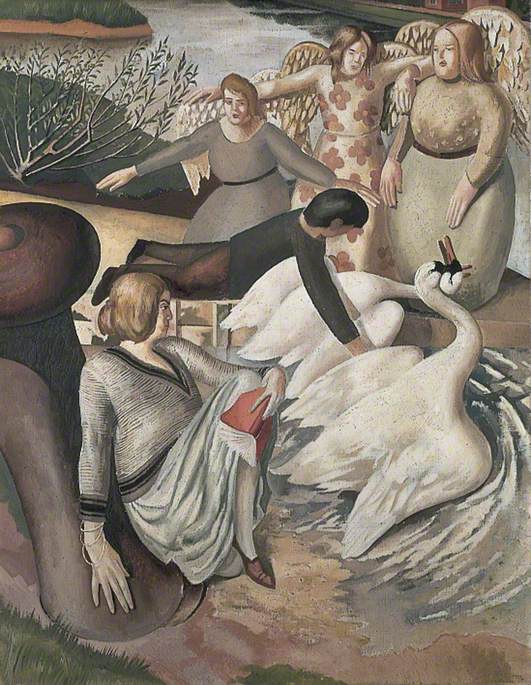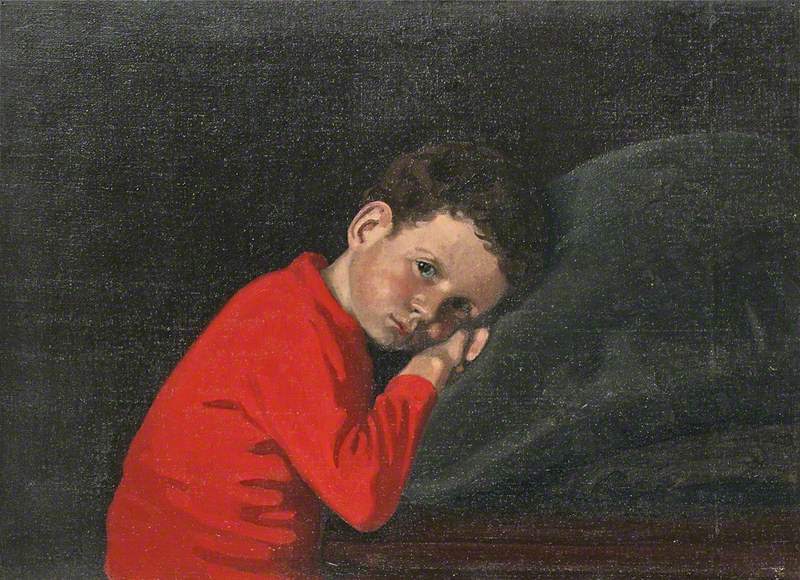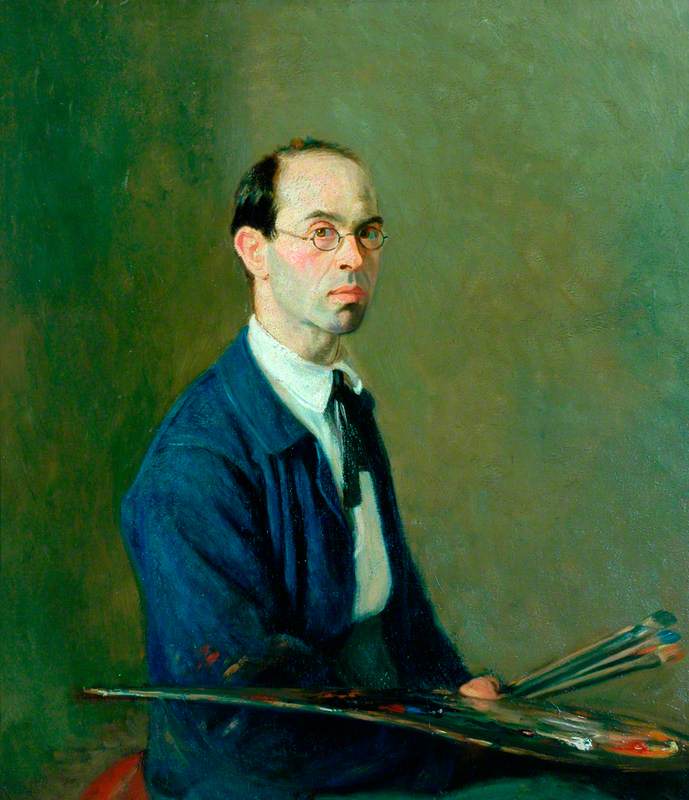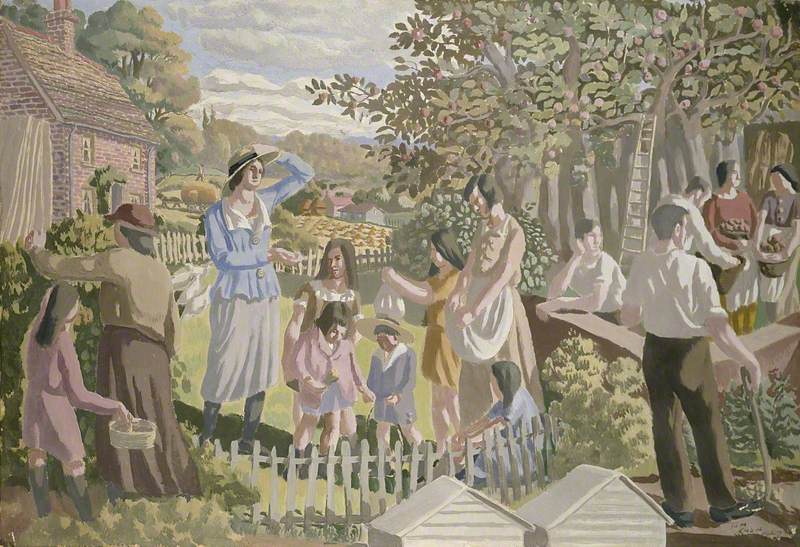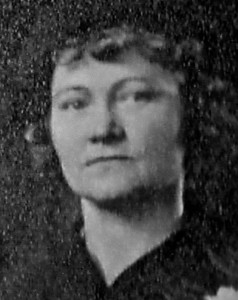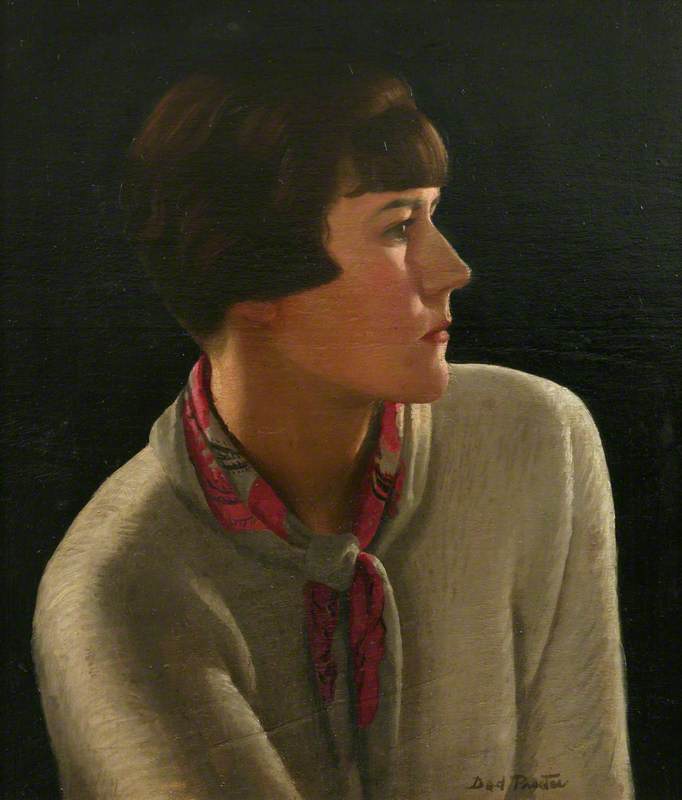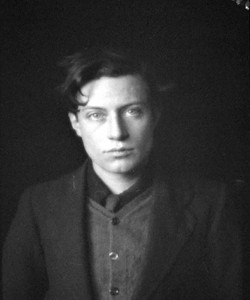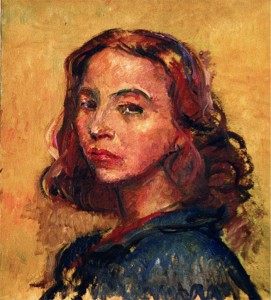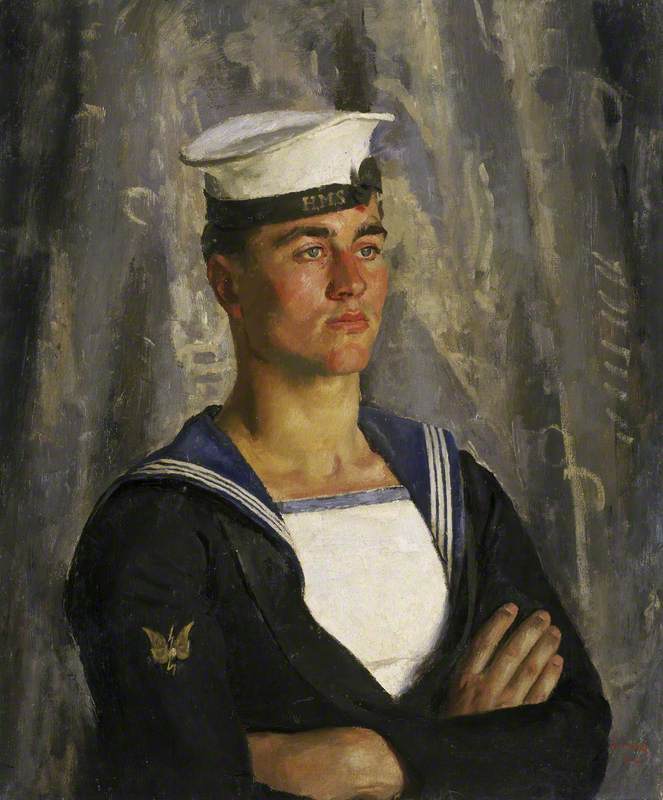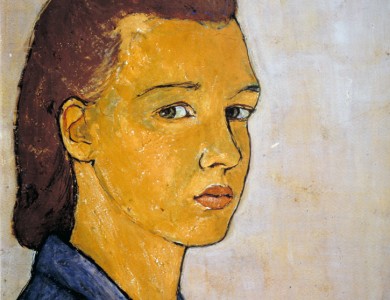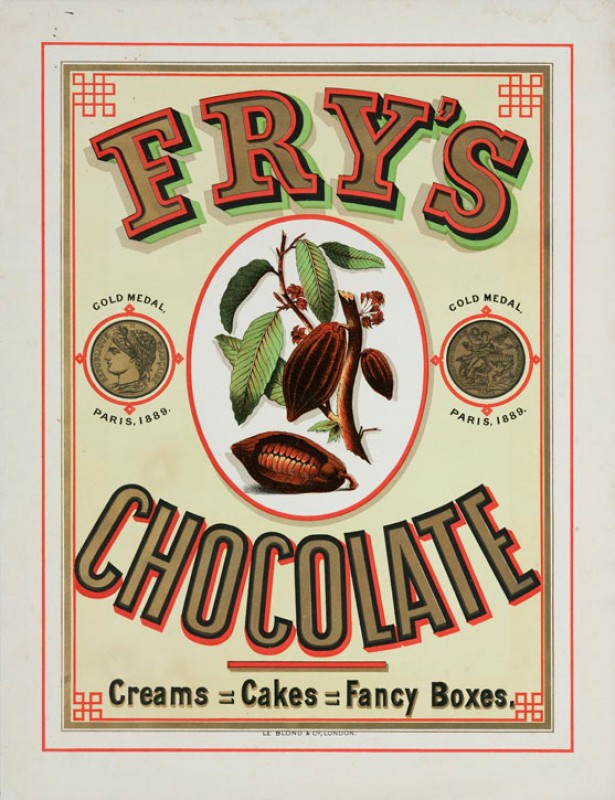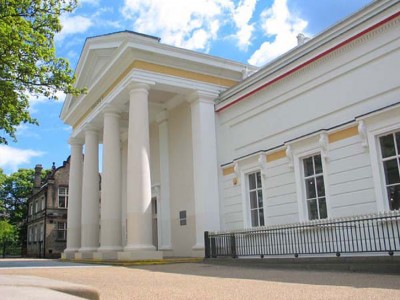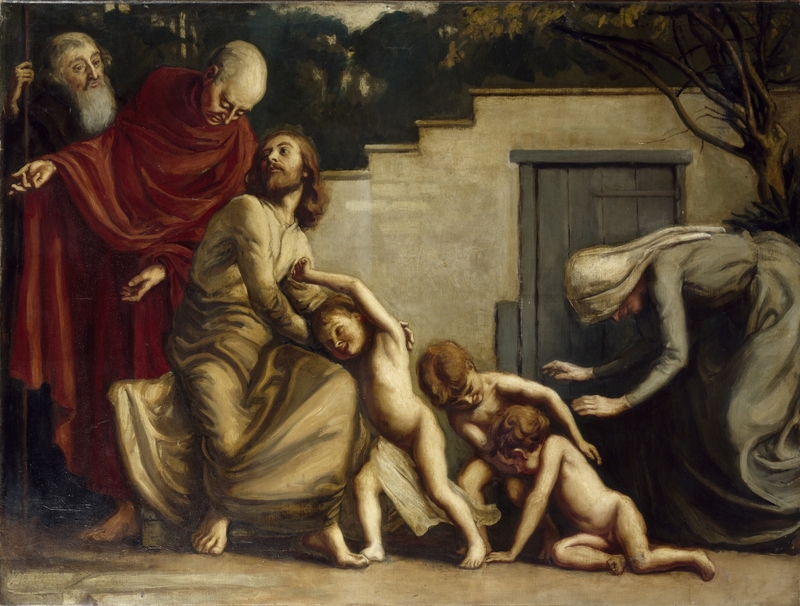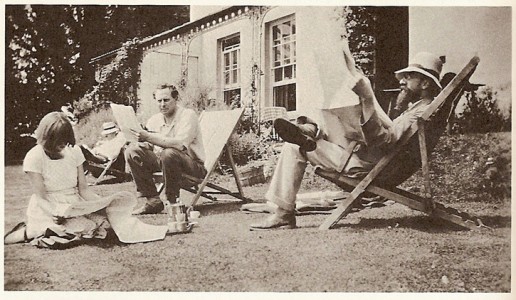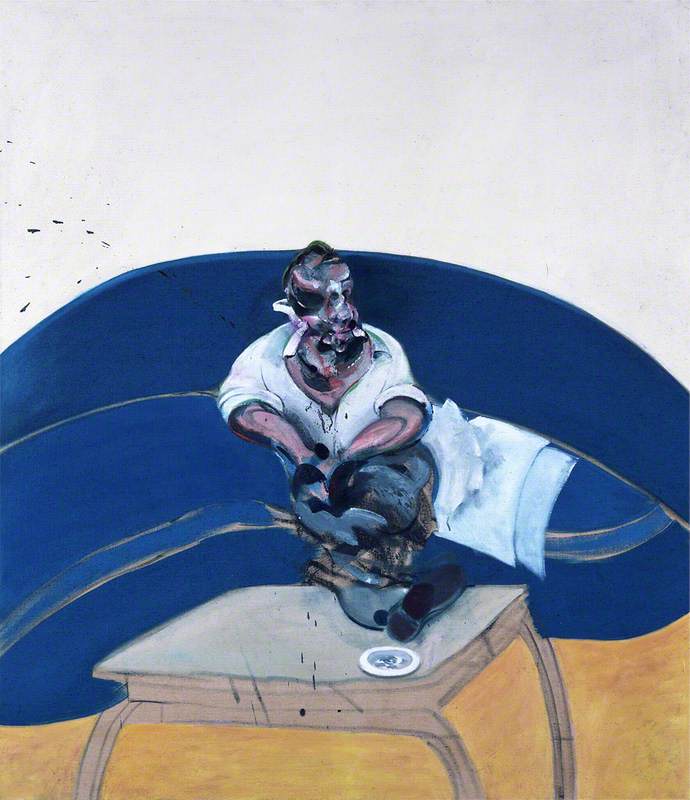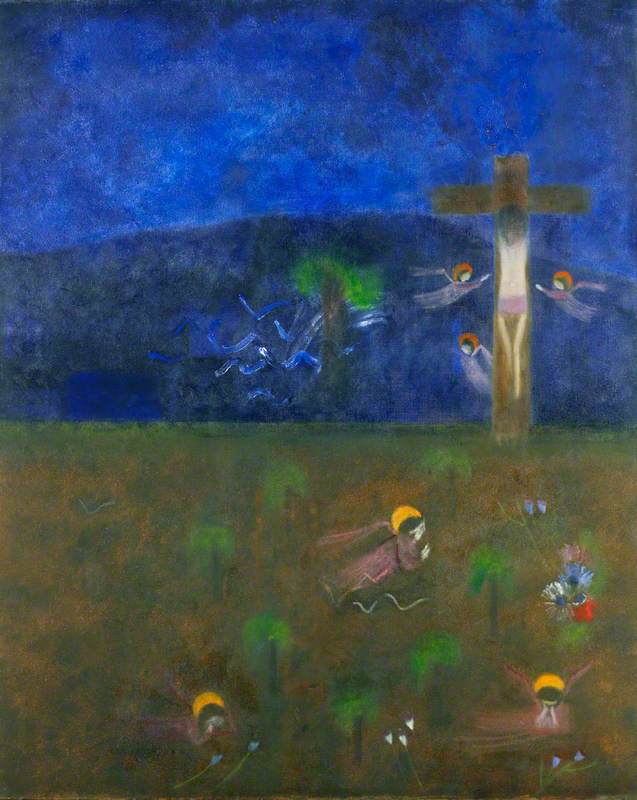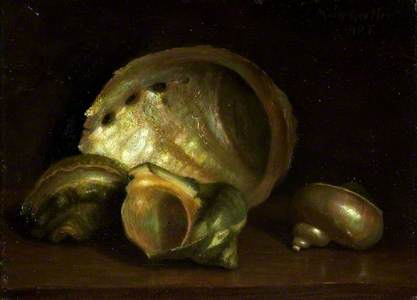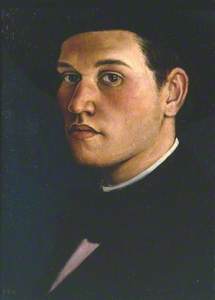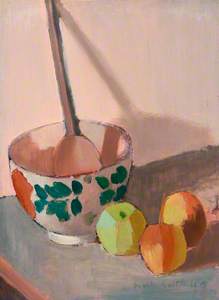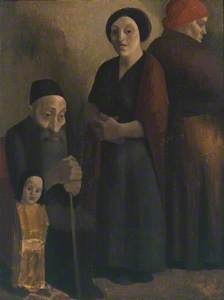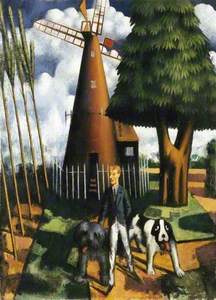In 1938, in Paint and Prejudice, the artist Christopher Richard Wynne Nevinson recalled his friend and fellow Slade student Mark Gertler as 'the genius of the place... the most serious, single-minded artist I have ever come across.'
Gertler's background did not make him an obvious candidate for the predominantly middle-class Slade, born on 9th December 1891 into a poor newly immigrant Jewish family in Gun Street, Spitalfields, in London's East End. Father Louis Gertler, mother 'Kate' (née Berenbaum), and siblings Jacob, Harris, Deborah and Sophy, originated from Przemyśl in Galicia province, Austria (now Poland).
Mark spoke only Yiddish until the age of eight, and attended Settles Street Synagogue School, but in 1900 when the family moved to nearby Bacon Street, off Brick Lane, Mark relocated to Deal Street School, which aimed to anglicise and assimilate its predominantly Jewish pupils. They moved again to Leman Street in 1905, but by the 1911 census, when Mark is listed as 'Art Student', they were living in the somewhat roomier surroundings of 14 Spital Square, with Louis and his elder sons running their furrier workshop from home.
Gertler's mother – 'the linchpin' of Mark's existence (as biographer Sarah MacDougall described her in Mark Gertler, 2002) – by now felt settled enough to revert to her native forename of 'Goulda'. Gertler portrayed her in many fine studies, such as The Artist's Mother (1911, Tate) and the stylised The Artist's Mother (1913, Glynn Vivian Art Gallery), describing this latter painting as 'barbaric and symbolic'.
His Portrait of the Artist's Family, a Playful Scene (1910–1911) shows brothers Harry and Jack in the house at Spital Square, watching their sister tickling Goulda, who has fallen asleep in her chair.
Portrait of the Artist's Family, a Playful Scene
1910–1911
Mark Gertler (1891–1939) 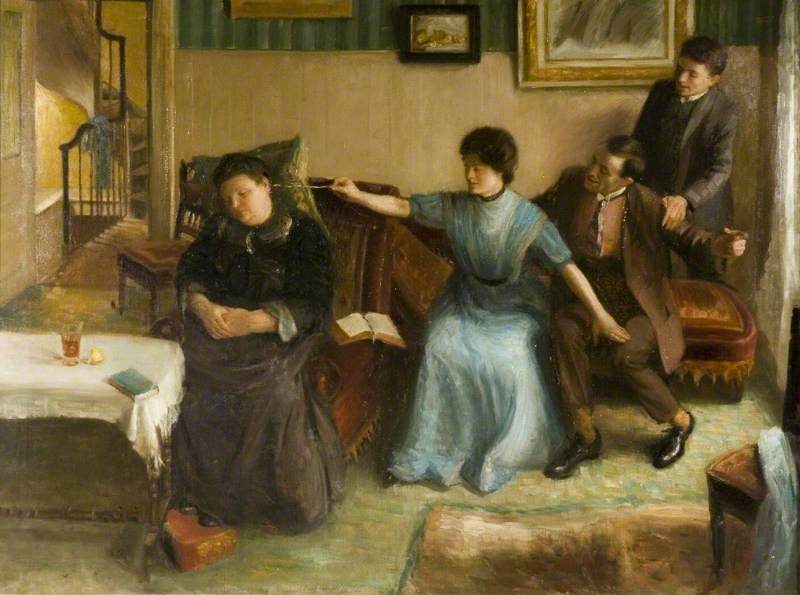
Gertler displayed a precocious artistic interest when aged just three, making a drawing to send in a letter to his father (then in America) of the fob watch he wanted sending. In Whitechapel, the chalk works of pavement artists attracted him and, after Louis bought him some watercolours, Gertler spent much time lying on the floor of their kitchen painting, often still lifes. On leaving school in 1906, Gertler enrolled in evening art classes at the Regent Street Polytechnic and, encouraged by headmaster Percival Gaskell, began exploring The National Gallery and others nearby. His paintings of that period, like Still Life with Apples (1907, private collection) show the influence of works in these collections (in this case, modelled on one by Fantin-Latour). To help pay his expenses, in December 1907 Gertler was apprenticed to the prominent stained-glassmakers Clayton & Bell, in their workshop adjacent to the polytechnic, working a ten-hour day as a glass painter, and tracing cherubim in charcoal, work he loathed.
In 1908 Gertler received a bronze medal for Still Life with Melon (1908, private collection) in a Board of Education national art competition. This encouraged him to apply for financial assistance from the Jewish Educational Aid Society (JEAS), which brought him to the attention of artist and critic Sir William Rothenstein. Rothenstein helped Gertler secure a place at the Slade School of Fine Art, writing to Gertler's parents of his talents as 'gifts of a high order' – a letter Goulda proudly framed and hung on her kitchen wall.
Gertler attended the Slade from 1908 to 1911, under the drawing master Henry Tonks. Gertler excelled, winning several painting prizes, a two-year Slade scholarship (1909), a British Institute Scholarship (1911), and a reputation for skilful draughtsmanship. The student intake during Gertler's time was unusually distinguished, what Tonks would later describe as the school's 'crisis of brilliance', including Paul Nash, C. R. W. Nevinson, Stanley Spencer, Edward Wadsworth and Dora Carrington, as well as several from Gertler's home-ground, who would become known as the Whitechapel Boys: David Bomberg, Isaac Rosenberg, and Clare Winsten (née Clara Birnberg, the one female member of this Whitechapel association).
Gertler and 'Chips' Nevinson quickly formed a close friendship, though becoming competitors in love with the arrival of Dora Carrington in 1910. Carrington, who styled herself simply by her surname, was talented and ambitious, yet insecure and capricious in her relationships, with a distaste for physical intimacy and an inclination for mischief-making. Both men pursued her assiduously, giving her (though each her senior by just a few years) the benefit of their advice on art, love and life itself. Gertler 'won', but the relationship proved a complex and often unhappy one, taking its toll on both Gertler and Carrington.
An unsigned pencil drawing of Gertler in the National Portrait Gallery (1909–1911) held to be by Carrington, shows an exquisite sensitivity of line, matched in his own portrait of her. Gertler formed an obsessive attachment to Carrington as his muse, writing to her that 'ever since I got to know you I thought of you in every stroke I did... I can't bear the idea of developing without you and I am developing so quickly.' Yet his intensity proved overbearing and Carrington struggled to meet his needs. Though she remained his friend, in time she moved on, finally forming a close relationship with the writer Lytton Strachey.
The first decades of the twentieth century were a highly fertile and experimental time for artists and Gertler was no exception. The seminal exhibition 'Manet and the Post-Impressionists', at London's Grafton Galleries from November 1910 to January 1911 (and again the following year), arranged by art critic Roger Fry, introduced English audiences to the work of artists such as Cézanne, Gauguin, Van Gogh, and Picasso – works The Pall Mall Gazette critic described in 1912 as 'stuttering in the dialect of the nursery'. In vain, Tonks advised his class against attending, to avoid 'contamination'.
The exhibition had as profound an effect on Gertler as it did on his peers, who began experimenting with brighter colours and flatter styles. Gertler's paintings around this time, like Still Life with Bowl, Spoon and Apples (1913) already show the influence of Cézanne on his work, made even more explicit in his 1917 work The Pond, painted at Garsington.
In 1911, while still a student, Gertler participated in his first group exhibition, Vanessa Bell's 'Friday Club' at the Alpine Club Gallery in Mill Street, showing his fine red chalk Head of a Girl, thought to be a portrait of one of his neighbours (and later owned by Paul Nash).
The following year he moved into the top-floor attic studio of 32 Elder Street, which he shared with his brother Harry and his wife, just around the corner from the family home.
Gertler remained deeply attached to home and the vital culture of his native Whitechapel, reflected in works such as The Rabbi and his Grandchild (1913) and The Jewish Family (1913), while at the same time enthusiastically enlarging his social circle.
He became friendly with the scholar and influential art collector Edward Marsh, who became a patron, and who purchased this latter painting. The writer Gilbert Cannan became Gertler's confidant, basing the title character of his 1916 novel Mendel directly on intimate conversations with his friend.
Gertler stayed regularly with Cannan at his converted windmill at Cholesbury, Buckinghamshire, painting him there in 1916 with his dogs Luath and Sammy. (Cannan's wife Mary was formerly married to J. M. Barrie and owned Luath, the model for Nana, the Newfoundland dog in Peter Pan.)
Gertler's war years were frequently spent away from London – as a committed pacifist, and later found medically unfit to serve, he was determined to sit out the war in the countryside, as he put it to Dorothy Brett in September 1914, 'to rot away my life until the Butchery is completed'. He later sought work as a war artist but working to a commission did not suit his volatile, anxious temperament and the only finished painting he produced on the war was Merry-Go-Round (1916), about which much has been written.
Ostensibly a carousel ride drawn from one he saw at Hampstead Heath Fair it remains, in our perception, a powerful anti-war protest. 'Great and true. But... horrible and terrifying' was D. H. Lawrence's view, expressed in a letter to Gertler that year, while Lytton Strachey, on viewing it, exclaimed (in a letter to Lady Ottoline Morrell) 'Oh Lord, oh Lord, Have Mercy upon us', adding, 'as for liking it, one might as well think of liking a machine gun.'
Through Marsh and Cannan Gertler met the New Zealand writer Katherine Mansfield and John Middleton Murry, Lady Ottoline and the cliquey (and often critical) 'Bloomsberries' – Gertler was 'an immense egoist' so Virginia Woolf recorded in her diary in September 1918: 'He means by sheer willpower to conquer art.' Lawrence and his new wife Frieda, who lived near Cannan, became close friends, and Gertler was the inspiration for the sculptor Loerke in Women in Love (1920), as he was Gombould in Aldous Huxley's Crome Yellow (1921), which satirised a party at Lady Ottoline's Garsington, where he was a popular and entertaining visitor. Yet for Gertler, the more he moved in such circles, the more he felt caught between two worlds, educated out of his former life yet not fully accepted by the one to which he aspired.
In 1915 Gertler moved to Hampstead, breaking ties, for the first time, with his family. He painted The Artist's Studio (1915) there, with its skylight. He was elected to the London Group, exhibiting his controversial Merry-Go-Round with them in 1917. Yet Gertler's health was failing. Diagnosed with a 'weak chest', which accompanied a recurrent depression, in 1920 the first symptoms of tuberculosis were recognised. Gertler went to stay at Banchory Sanatorium near Aberdeen, where he was treated by Dr Andrew Morland, the Harley Street specialist who would become a friend, and later attend both D. H. Lawrence and George Orwell.
In 1921 Gertler held his first solo show at the Goupil Gallery, which included The Irish Yew, painted at Garsington where he was now a regular guest, and which he described as almost a 'second home'.
Around 1925 Gertler met Marjorie Greatorex Hodgkinson who had begun studying under Tonks in 1921. That same year Gertler was admitted to Mundesley Sanatorium in Norfolk, painting to relieve his boredom, often against the advice of his doctors. Marjorie's visits to him there no doubt benefited his health, though he was readmitted several times, again in 1929 and 1936. He and Marjorie married in 1930 and their son Luke was born two years later.
Despite their poverty, the Gertlers maintained a busy social life and their Saturday 'at homes' were popular, while Mark's work – still lifes, portraits and monumental nudes like the Mandolinist (1934) – continued to develop. Yet dogged by a recurrent depression and ill-health, and highly jealous of his studio time, Gertler did not settle easily into family life: by the mid-1930s, despite attempts to improve matters, the marriage had deteriorated and Gertler himself become intermittently suicidal.
The loss of close friends Katherine Mansfield and D. H. Lawrence to tuberculosis, and then Carrington to suicide, soon after Strachey's death, and his own mother's death (in 1932), surely did not help. Time spent abroad in the hopes of bucking him up failed, despite inspiring some accomplished works like Still Life with Guitar with Fruit (1935) – indeed some of his 1930s works received harsh criticism from the likes of Anthony Blunt who accused him of lacking originality.
Gertler's final exhibition, held at the Lefévre Gallery in May 1939, failed to attract visitors and he sold only three works. Not long after, on 23rd June 1939, Mark Gertler ended his life in his studio at 5 Grove Terrace, Highgate Road, London. He was buried four days later in Willesden United Synagogue Cemetery.
Sara Ayad, independent art researcher
